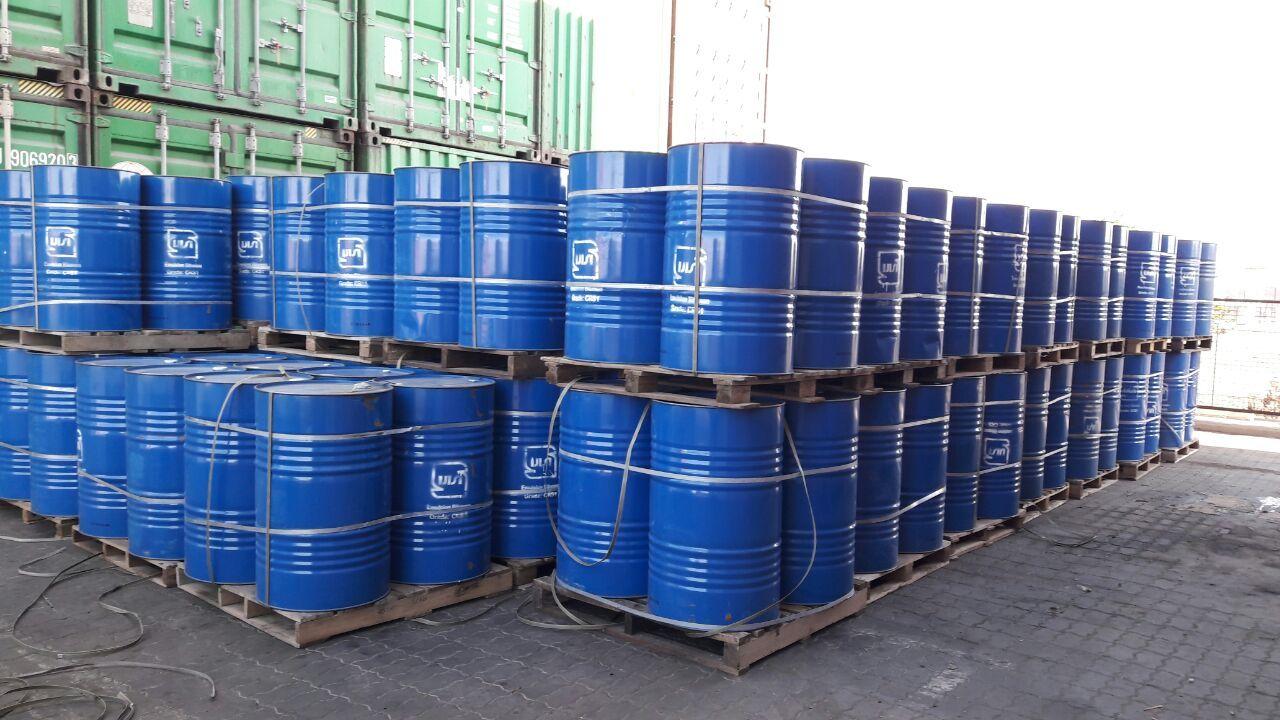Bitumen Emulsion SS1

Bitumen Emulsion SS1 Cationic and Anionic Slow Setting
The properties range of bitumen emulsions help to contribute towards the construction, rehabilitation and maintenance of roads (from low to high traffic volume roads). Our experience and technological expertise enable us to offer our customers solutions designed for the specific requirements of their individual projects or market needs.
Prime Coat
Prime coat typically is the application of low viscosity Bitumen over a granular base, preparing it for laying an asphalt mixture on it. A prime coat performs several important functions.
Coats and bonds loose material particles on the surface of the base.
Hardens or toughens the surface of the base.
Waterproofs the surface of the base by plugging capillary or interconnected voids Provides adhesion or bond between the base and the asphalt mixture.
Bitumen emulsions used for Prime Coat are Cationic Slow Setting Emulsion 1 (CSS1) and Cationic Slow Setting Emulsion 1h (CSS1h) as per latest MoRTH specifications.
Tack Coat
A tack coat is a thin bituminous liquid bitumen emulsion applied between HMA pavement lifts to promote bonding. Adequate bonding between construction lifts and especially between the existing road surface and an overlay is critical in order for the completed pavement structure to behave as a single unit and provide adequate strength. If adjacent layers do not bond to one another they essentially behave as multiple independent thin layers – none of which are designed to accommodate the anticipated traffic-imposed bending stresses. Inadequate bonding between layers can result in delamination (debonding) followed by longitudinal wheel path cracking, fatigue cracking, potholes, and other distresses such as rutting that greatly reduces pavement life.
Tack coats should be applied uniformly across the entire pavement surface and result in about 90 percent surface coverage. In order for this uniformity to be consistently achieved, all aspects of the application must be considered and carefully controlled. Specific aspects are:
- The condition of the pavement surface receiving the tack coat T
- The application rate
- Tack coat dilution
The pavement surface receiving the tack coat should be clean and dry to promote maximum bonding. Emulsified tack coat materials may be applied to cool and/or damp pavement, however, the length of time needed for the set to occur may increase. Since existing and milled pavements can be quite dirty and dusty, their surfaces should be cleaned off by sweeping or washing before any tack coat is placed, otherwise, the tack coat material may bond to the dirt and dust rather than the adjacent pavement layers. This can result in excessive tracking of the tack coat material. Construction vehicles and equipment pick up the tack-dirt mixture on their tires and leave the existing roadway with little or no tack coat in the wheel paths. Slippage cracking and delamination are distresses typically seen when cleanliness is lacking.
Anionic Bitumen Emulsion SS-1 & SS-1h
Bitumen Emulsion SS1 / SS1h are slow-setting, anionic type of asphalt emulsions manufactured according to specifications of ASTM D977 – “Standard Specifications for Anionic Emulsified Asphalt.”
It is a dispersion of small droplets of penetration grade asphalt cement in water with the aid of an emulsifier. The size of the droplets is normally in the order of 1-20 microns, with some particles as big as 100 microns. Since these droplets are negatively charged, breaking (coalescence) is purely by evaporation of water.
Uses
2.1 Tack Coat – a very light application of diluted asphalt emulsion. It is used to ensure a bond between a surface being paved and the new course. Tack coating is one of the major uses of Spramul SS-1h. It is used to guarantee adhesion of hot mix or cold mix asphalt overlay to existing asphalt paved roads.
2.2 Prime Coat- RAHA Bitumen Emulsion SS1 is used for Prime Coat application and perform several important functions such as coating and bonding loose mineral particles on the surface of the base, hardening and toughening the surface of the base, waterproofing the surface of the base by plugging capillary or interconnected voids, and providing adhesion or bond between the base and the asphalt mixture. This grade of emulsion penetrates quite deep in WMM / WBM surface providing an effective Prime Coat.
| Application | Quantity in kg / 10 sqm Area |
| prime coat | |
| Low porosity | 6 to 9 |
| Medium porosity | 9 to 12 |
| High porosity | 12 to 15 |
Method of application: by spray (distributor)
2.3 Fog Seal – a light application of asphalt emulsion diluted with water, similar to tack coat. It is used to renew old asphalt road surfaces that have become dry and embrittled with age, to fill tiny cracks and surface voids and to inhibit raveling. No other surface treatment is applied after fog sealing.
Storing and Handling
Emulsions are stored between 10 C and 60 C, depending on the temperature required for the application. When stored at higher temperatures, the tanks must be insulated. Hot water or steam can be used as the heating medium. Oil burners are also used.
Bitumen Emulsion SS1/SS1h should not be heated to above 60 C or else the material can no longer be used as intended. While heating during transport and in tanks or distributors it should be agitated to eliminate or reduce skin formation.
At tank storage, a light agitation is performed to avoid settlement (forced air is not recommended as it will cause the emulsion to break). At drum storage, it is recommended to roll the drums before use to ensure homogeneity.
Before diluting SS1 the compatibility of the water with the emulsion must be checked. The water should always be added to the emulsion, not the emulsion to the water.
Bitumen Emulsion SS1 / SS1h must not be mixed with cationic asphalt emulsions or other types of products in storage tank transports, or distributors.
Packaging – available in 200kg. drums
Method of application: by spray (distributor)
Typical Properties
Test Method SS-1h, SS-1
Tests on emulsion: ASTM D244
Viscosity, Saybolt Furol @ 25 C, s 20 – 100
Storage stability test, 24 hr., % wt. 1.0 max
Cement mixing test, % wt. 2.0 max
Sieve test, % wt. 0.10 max.
Residue by distillation, % wt. 57 min.
Particle Charge Test —
Tests on residue from distillation:
Penetration @ 25 C, 100 g, 5 s ASTM D5 40 – 90 100 – 200
Ductility @ 25 C, 5 cm/min, cm. ASTMD113 40 min
Solubility in trichloroethylene, % wt. ASTM D2042 97.5 min
Cationic Bitumen Emulsion CSS1
RAHA Bitumen Emulsion CSS1 ASTM is designed for use in slurry seals and for cold storable mixtures for patching. They are designed for soil stabilization and also suitable for use with cold recycling. These emulsions are tailor made as per quality of aggregates and local site conditions.
| Application | Quantity in kg / 10 sqm Area |
| Fog Seal | 5 to 10 |
| Slurry Seal | 10 to 12 |
| Premix Seal Coat | 12 to 15 |

